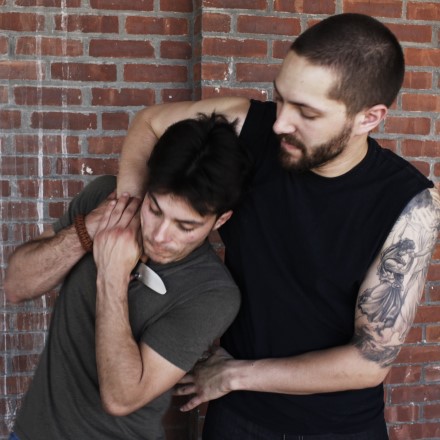Krav Maga Techniques

Krav Maga Techniques Articles
- Clothing Grabs
- Are Two Handed Choke Defenses Relevant?
- More Of The Same
- Pushes: How To Defend Against Them & How To Use Them
- Chokes & Strangulations
- Protecting Your Fingers
- Head Movement And Slipping
All Krav Maga Articles
Krav Maga's Use Of Families & Reuse Of Movement In Techniques
Krav Maga techniques are based – where possible – on natural, instinctive movements e.g., use if made of the “flinch” or “startle” reflex for defending against circular strikes, and defenses against chokes and strangulations see the hands go up to grab the arm or hands of the attacker that are being used to block the airway etc. They are also grouped into “Families of Techniques”, that allow similar movements to be used against a variety of attacks that share some form of common properties e.g., somebody who is standing behind, with their arm wrapped around your neck, with the blade of a knife pressed against the front of your throat, is in a similar position to somebody who is trying to apply a rear-strangle meaning that a similar solution can be used to deal with both problems; the offending arm can be plucked down, pulling either the arm with the knife down (where it is a knife threat), or the arm that is blocking the airway (strangulation or choke), and then pinning the arm to the chest whilst you step under the attacker’s armpit and come up behind them etc. Using similar solutions and movements to deal with different problems has a multitude of benefits. One is that when it comes to decision making there are less potential solutions to choose from making selection and application of the correct technique much faster than if many different techniques existed. Another is that when you are practicing the defense against the knife-threat, you are also practicing movements contained in the escape from a rear strangle and vice versa. This means that getting to the perfect 10 000 repetitions that are needed to effectively “master” a technique is going to come much sooner as each time you practice dealing with the knife threat you are also practicing how to deal with a rear-strangle etc. This is one of the reasons why Krav Maga students tend to progress faster than students of other self-defense systems and martial arts.
There is also reuse of movements within a technique i.e., one movement may accomplish several differ goals. An example of this is the general solution for dealing with a rear-strangle e.g., after managing to get the arm free from blocking the throat and airway, the head is turned to look at the attacker; this accomplishes two goals: one, it means that should the attacker manage to pry their arm free and attempt to reapply the strangulation, the airway in now turned to the side and is protected; tow, it means that when trying to make the final escape, the chin is not going to be positioned in a way where it could get caught on the attacker’s arm, preventing escape and disengagement etc. This idea of one thing (such as turning the head), accomplishing several different things is part of the efficiency of the Krav Maga approach. This when coupled with putting techniques into families so when practicing one technique you are in fact practicing others means that different Krav Maga techniques support each other, which in turn makes the method so effective at dealing with real life violence.